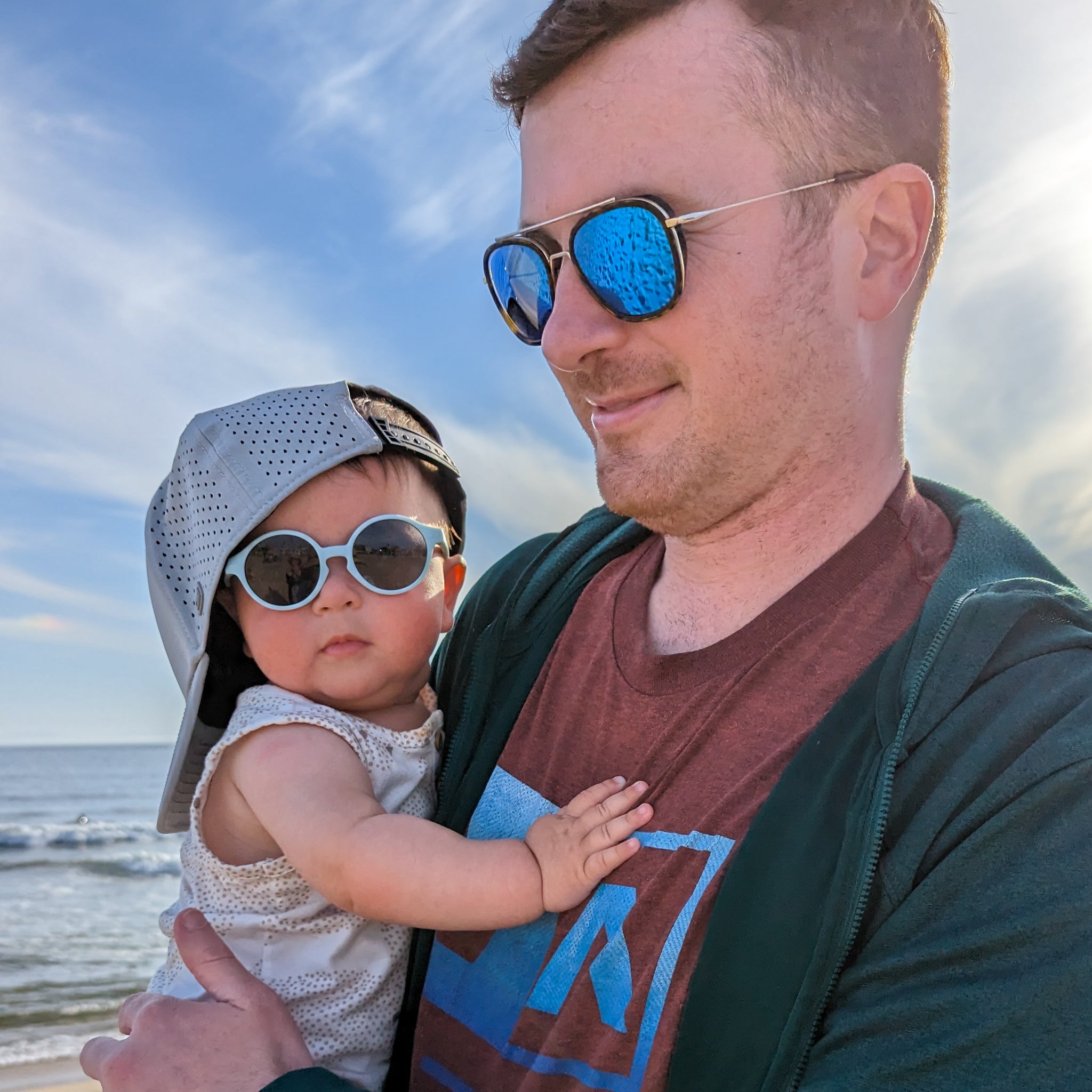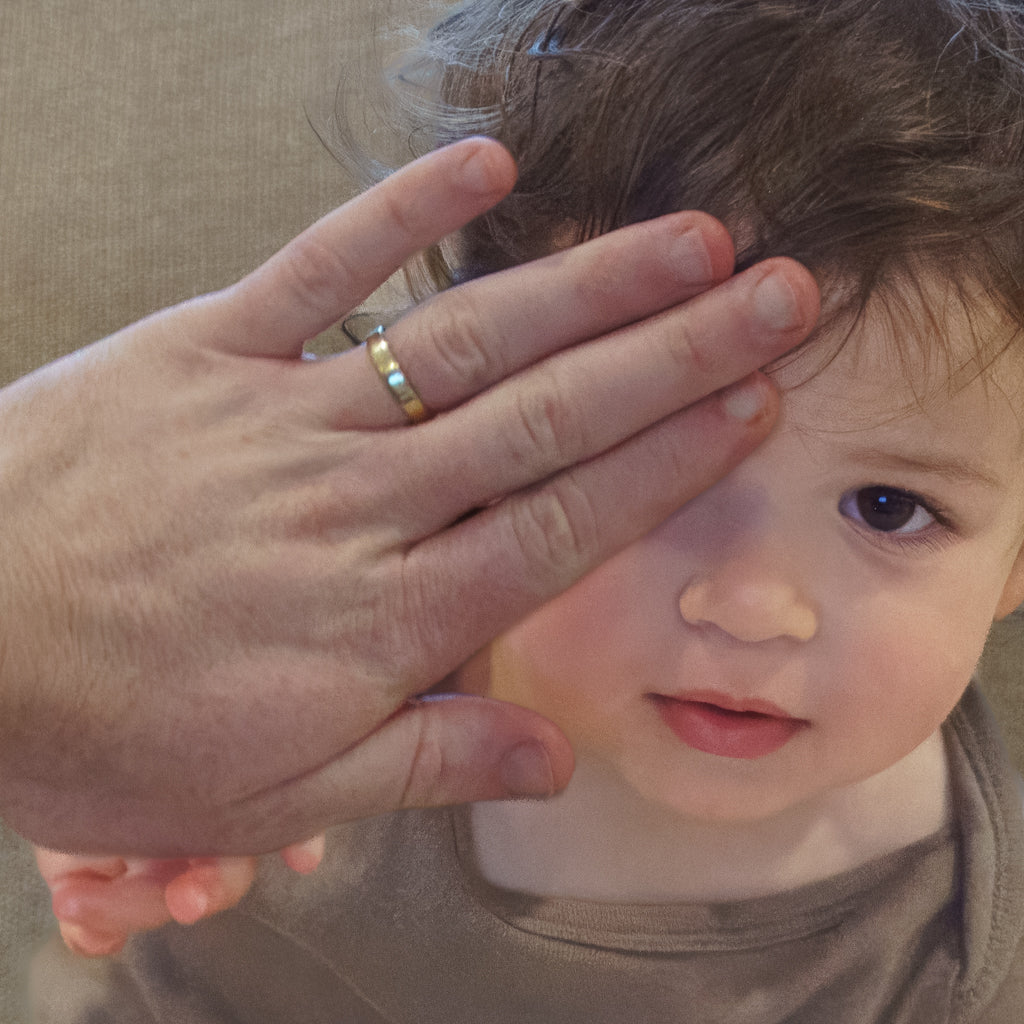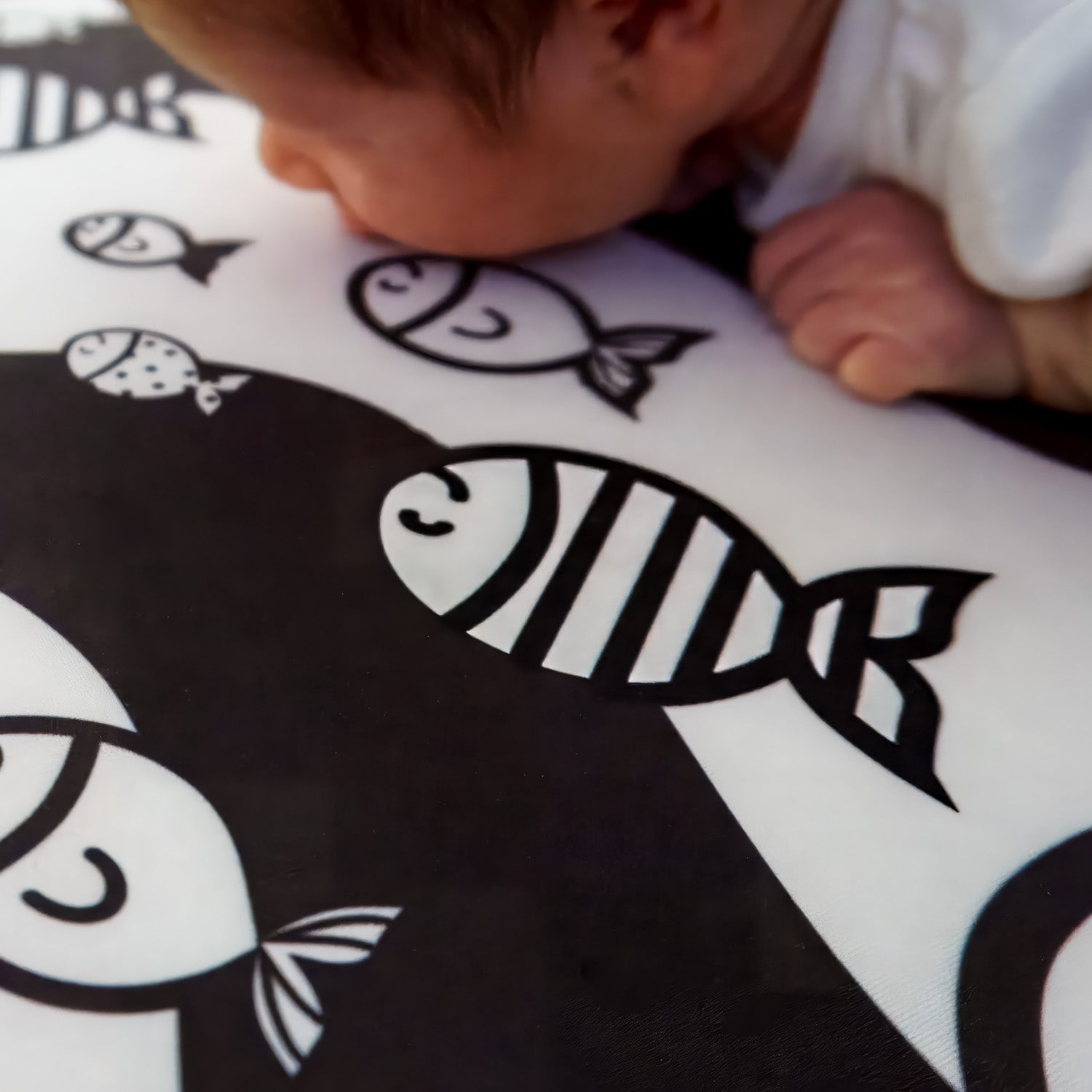
Top 5 things parents can do to protect their child’s eyes
Being a parent to a toddler is like being a bodyguard. It requires equal parts physical dexterity and constant threat surveillance to prevent someone from injuring…themselves? Whether it’s a one-handed torso grab as your toddler launches off the couch, quickly moving a sharp object out of their reach, or using your finger to fish something out of their mouth even though you’re not sure what it is but you’re definitely sure it shouldn’t be there, a parent is essentially the invisible bubble wrap around their kid. Full disclosure, all the above happened to me within the last hour. While the list of things parents do to protect their children is endless, there are some true standouts when it comes to protecting their eyes.
Babies are born with all the necessary structures of their eyes, but there is still a lot of growth and development happening in the first few years of life. I put this list together to help parents protect their children’s eyes during these incredibly important formative years. Read more below to find out how to lower your child’s risk for eye injuries and diseases with these simple, relatively easy habits! I say relatively because the simplest thing can turn into a disaster with a toddler, so if any of these are your Everest on any given day, you’re not alone. Ok let’s start!
Tip #1: Go outside!
Yes, you’ve been told a thousand times going outside is great for your child, and it’s true for many reasons. For eyes, it’s AMAZING! Outdoor time has been proven over and over to help delay the need to wear glasses for nearsightedness (a condition called myopia). The MOST common worry I address with parents of my patients is whether their child will need glasses, and when. Nearsightedness (myopia) is rising exponentially in the United States so I completely understand why parents worry. Time spent outside is consistently proven to delay the start of nearsightedness. Most children end up needing glasses because their parents wear glasses (and there is a strong genetic component), but the younger kids are when they develop myopia, the higher the chances their prescription will get really strong as they get older.
The problem isn’t just how thick their glasses get. High prescriptions increase the risk of certain blinding eye diseases like glaucoma, macular degeneration, and retinal detachments. By keeping prescriptions as low as possible, you are lowering your child’s chances of developing these conditions as they grow up. So just by hanging out in the backyard, going for a walk, or visiting a park, you’re helping lower your child’s risk for eye disease. Pretty cool!
How much time should your tiny tot spend catching rays? The recommendation is 90 minutes a day, split up however you like. Even if you can’t get to 90 minutes, any amount of time is beneficial, so do what you can, your baby’s eyes will thank you.
Tip #2: Wear sunglasses
Speaking of going outside, don’t forget those shades! While outdoor time is fantastic for delaying the need for glasses (for nearsightedness), UV rays are still harmful to everyone’s eyes. The inside and outside of baby eyes, as well as the delicate skin of the eyelids are all susceptible to UV damage. The UV exposure a child gets in the first 18 years of their life contributes to the later formation of cataracts and the development of diseases like macular degeneration. So, get in the habit of placing sunglasses on your baby whenever they are outside!
I realize, not all babies are fans of keeping something on their face. To help your infant get used to wearing sunglasses, try getting ones with a strap so they’ll stay on as they wiggle around. Also, start using baby sunglasses when they’re young so the sensation of something on their face becomes normal. You can also pair the sunglasses with a wide brimmed hat, so if they don’t keep them on at least their eyes are shaded.
Characteristics to look for in a good pair of baby sunglasses are 100% UVA/B protection with impact-resistant lenses and a lightweight frame. UV protection is like sunblock for your child’s eyes, and impact-resistant lenses help prevent eye injuries. Finally, consider polarized lenses! A polarized lens is a premium sunglass feature that cuts down glare and reflections to make outdoor time extra comfortable with more smiles and less squinting!
Tip #3: Wash hands frequently
Two dreaded words: PINK EYE. Where does pink eye come from? Germs! Pink eye is a generic term used to describe a front-of-the-eye infection, otherwise known as a conjunctivitis. A conjunctivitis can be caused by a virus, allergies, or most commonly in children, bacteria. These infections come from outside germs introduced usually by, you guessed it, dirty hands.
I’m going to go out on a limb and say it’s impossible to get your baby or toddler to stop rubbing their eyes. Keeping their hands clean so they don’t introduce any germs when they do is a little more achievable. It’s always a good idea to wash hands when coming back from an outing, school or daycare, before and after meals, and after particularly messy messes to help prevent the transmission of diseases. Plus, good hand washing practices are great to introduce early with the hopes these habits continue as they grow up. Wishful thinking, but it could happen!
Tip #4: Check if they’re using both eyes
People with one stronger eye, and one weaker eye (generically known as a lazy eye but medically known as having amblyopia) are up to eight times more likely to have an eye injury to their BETTER eye. An unexpected statistic, but it’s true. If you’re not sure whether your baby has amblyopia, read this post to learn a quick check to find out if they are at risk. Scheduling your child for an eye exam is the best way to know if both eyes are functioning as they should, so add that to your list of doctor’s visits if you haven’t already.
Tip #5: Take breaks during screen time
Screen time. A parenting hot topic to be sure. I’ll talk more about the visual effects of screen use in an upcoming post, but for today’s topic I want to discuss staring at screens. Blinking is incredibly important to maintaining the quality of your tears. When children stare at screens, they blink less which leads to dry eye. Multiple studies link screen time to dry eyes, which causes a sandy, burning, and irritated sensation. No fun no matter how old you are!
I think there are times when a few minutes of screen time can save the day, so they’re not taboo in my books. But, as with everything, moderation and mindful use is key. When it comes to screens and their impact on your child’s eyes, taking breaks is what is most important. Interrupt and prevent extended screen time with a snack, going outside, playing with toys or doing any other non-screen activity.
The standard rule for adults is to take a break after every 20 minutes in front of a screen. For young kids I recommend much less, no longer than about 10 minutes at a time. Even a 20 second break to do something silly is good. If you’re striving for a screen-free environment, way to go! If screens are a necessary part of your routine, introducing some breaks is a great way to keep dry eye, and its discomfort at bay.
I hope you find these tips easy enough to build into your childcare routine. Don’t feel bad if you’re not doing any of them yet, I’ve had this conversation with thousands of parents who had no idea what to do to protect their child’s eyes. If you are already doing these things, great job you overachiever! Hopefully I’ve given you some insight into the benefits of your efforts so you can give yourself an extra pat on the back, you deserve it!
If you have any questions or comments, feel free to share, along with any cute baby sunglasses pics!






Leave a comment
This site is protected by hCaptcha and the hCaptcha Privacy Policy and Terms of Service apply.